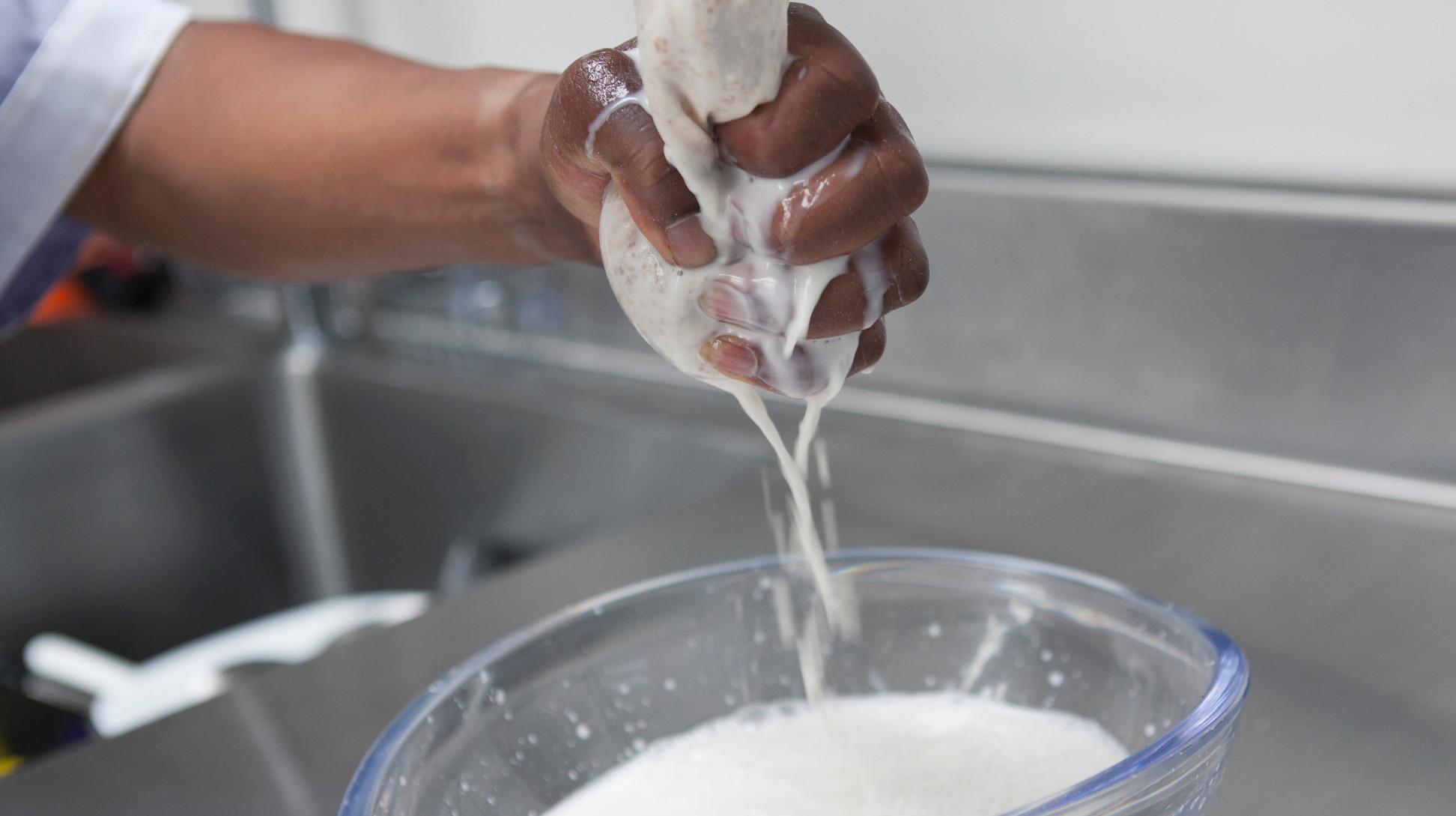How Is Almond Milk Made?
We may receive a commission on purchases made from links.
As cranky old folks love to remind us, milk comes from mammals, not almonds or any other kind of nut, because nuts do not lactate. It's what distinguishes us from all the other bacteria and plants and feathery and scaly animals. What, then, do you call a substitute for milk that comes from an almond?
Until anyone else has a better idea that becomes universally accepted, we're going to keep calling this stuff almond milk. For those of us who don't happen to own livestock, it's also much easier to procure this stuff on our own.
Almond milk dates back to 13th-century Baghdad, where people found it a useful alternative to animal milk: almonds were plentiful, and almond milk didn't spoil in the heat as quickly as animal milk did. Muslims brought both almonds and almond milk to Europe in the Middle Ages, where it immediately became popular among Christians who realized it was a handy, if expensive, way to get around the prohibition against eating animal products—which included cow's milk—during Lent and other fast days. It was also fed to invalids and was considered a useful remedy for hangovers. By the 15th century, it was a staple in cookbook recipes all across Europe.
And then it was forgotten by nearly everybody outside a few eccentrics and vegans—until 2008 when Blue Diamond, a California growers collective that produced raw almonds as well as Almond Breeze almond milk, noticed that the owners of Silk soy milk had teamed up with Dean Foods to get Silk into dairy cases, presenting it as a viable dairy alternative. Blue Diamond decided to promote Almond Breeze the same way, with the added enticement that almond milk tasted better than soy. The rest you know, right on up to the current moral dilemma about whether we should continue to eat almonds because of the way the almond industry has been endangering honeybees.
There are actually two ways to make your own almond milk at home, the easy/lazy way and the hard/labor-intensive way.
The Hard/Labor-Intensive Way
Soak a cup of whole almonds overnight. They will plump up like beans, so make sure you soak them in enough water so that they stay covered once they've absorbed a good amount of the liquid. Soaking them washes off some of the tannins that make raw almonds taste bitter and also removes some phytic acid, which may interfere with digestion. (Note: phytic acid is not the biggest deal, it just impedes the ability of your digestive tract to absorb minerals for that particular meal.)
Once you're done soaking, drain and rinse the almonds. Get out your mortar and pestle like the Baghdadi cooks of old...
Heh, heh, just kidding. Dump them into a blender with three to five cups of filtered water, depending on how thick you want your milk to be, and any other add-ins for flavor, such as vanilla, cinnamon, cocoa, or berries. Pulse and blend for three to four minutes, until the almonds are thoroughly pulverized.
Dump the contents of the blender into a sieve (set over a bowl) that's been lined with cheesecloth, some muslin, or a thin dishtowel. Or, if you're really fancy and committed, you can forego the sieve and use a nut bag. Let the almonds drain until there's mostly pulp at the bottom of your draining vessel. Press it with a spoon to release more of the liquid into the bowl below. Then pick up the cloth, twist it around, and squeeze really, really hard to get out the rest of the liquid. (If you've ever made potato latkes, it's sort of like the step where you're getting your potatoes super-dry.) Hooray! You've got almond milk!
Pour it into a jar or some other airtight vessel. It should last around four days in the refrigerator before it goes bad.
The Easy/Lazy Way
This one comes from The First Mess Cookbook by Laura Wright, reposted on Food52. It is, Sarah Jampel writes on Food52, "founded on the smart observation that the [almond butter and almond milk] differ by only one essential ingredient: water."
Here is the recipe in full: Blend three tablespoons almond butter with one-and-a-half cups water. Add extra flavorings if you feel like it. Hooray! You've got almond milk!
